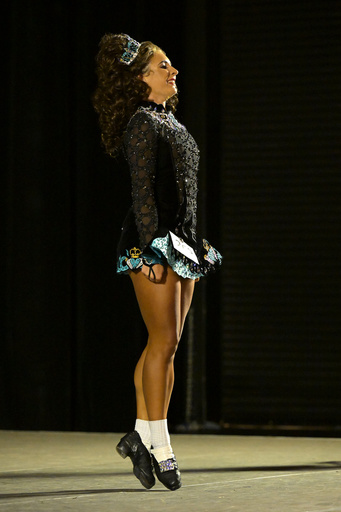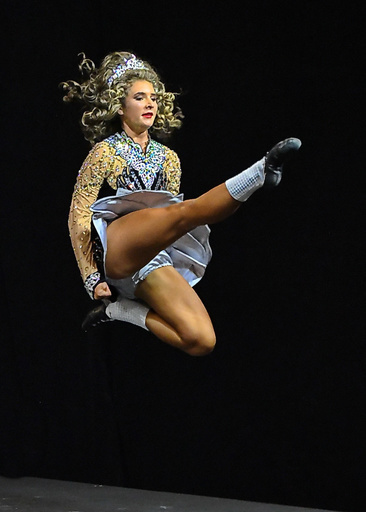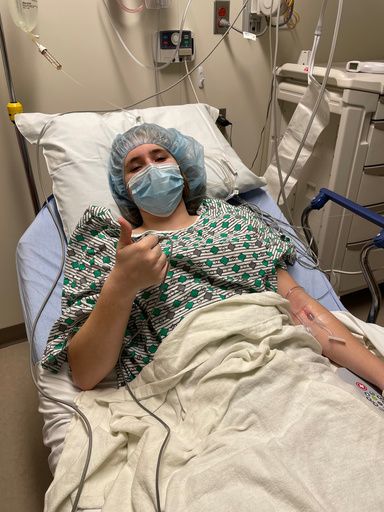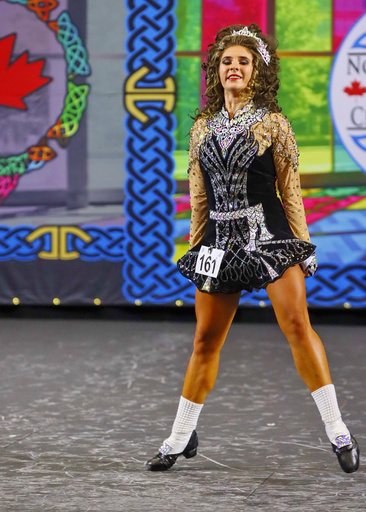Stay in the Game: Irish Dancer Back to Winning on Stage, Thanks to Skilled Surgeon and Arthrex Innovation


Riverdance may have introduced Irish dance to millions of people around the globe, but the highly athletic, physically demanding style of dance has roots that reach back all the way to the Celts.
Today, it’s evolved into a competitive sport that demands strength, stamina and excellent coordination--not to mention strong ankles.
“We dance completely on our toes with arms at our sides, which puts a lot of stress on the ankles,” said Melayna Prindle, a 17-year-old Irish dancing champion who started competing when she was 10 and qualified for a worldwide competition in 2021, before badly spraining her ankle on stage. “I did a jump and came down wrong. I immediately started crying, I knew I really hurt myself.”
Melayna managed to dance through the pain until eventually her ankle became so unstable, she kept rolling it and falling down. That’s when she found Kevin Martin, DO* (Columbus, OH), at The Ohio State Wexner Medical Center.

“Melayna came to me as a high-level athlete with a grossly unstable ankle, which was making it impossible to compete at the level she wanted to,” Dr. Martin said. “Irish dance is the worst thing she could do with the injury she had.”
Dr. Martin stabilized her ankle using the InternalBrace™ technique and two DX Knotless FiberTak® soft suture anchors**.
“The beauty of these repairs is not only are they invisible beneath the skin, which is important for a dancer, but Melayna was able to return to dance quickly. She wore a boot for two weeks and then started physical therapy,” Dr. Martin said. “The InternalBrace technique helps patients avoid muscle atrophy by getting them back on their feet faster than with traditional Brostom repairs.”¹,²
After less than four months of physical therapy, Melayna was not only back dancing at The Academy of Irish Dance in Ohio, but she was competing--and winning--on stage again.


“She just jumped right back in,” Melayna’s mom, Kendra Prindle said. “The teachers were blown away by that. Often after an injury that requires surgery, dancers are just done.”
Today, Melayna is back performing at such a high level that she recently competed at the Irish Dance World Championships in Montreal, Canada, winning her sixth team championship. She also competed in the North America Irish Dance Championships in Nashville, TN.
“My ankle is solid,” Melayna said. “I run cross-country, too, and I know I can trust it now. I don’t have any pain anymore and my future possibilities are limitless.”
References
1. Viens NA, Wijdicks CA, Campbell KJ, Laprade RF, Clanton TO. Anterior talofibular ligament ruptures, part 1: biomechanical comparison of augmented Broström repair techniques with the intact anterior talofibular ligament. Am J Sports Med. 2014;42(2):405-411. doi:10.1177/0363546513510141
2. Kulwin R, Watson TS, Rigby R, Coetzee JC, Vora A. Traditional modified Broström vs suture tape ligament augmentation. Foot Ankle Int. 2021;1071100720976071. doi:10.1177/1071100720976071
Disclaimers
**The use of this device may not be suitable for patients with insufficient or immature bone. The physician should carefully assess bone quality before performing orthopedic surgery on patients who are skeletally immature. The use of this medical device and the placement of hardware or implants must not bridge, disturb or disrupt the growth plate.
The InternalBrace™ surgical technique is intended only to augment the primary repair/reconstruction by expanding the area of tissue approximation during the healing period and is not intended as a replacement for the native ligament. The InternalBrace technique is for use during soft tissue-to-bone fixation procedures and is not cleared for bone-to-bone fixation.
This is not medical advice and is not meant to be a substitute for the advice provided by a surgeon or other qualified medical professional on the use of these products. You should talk with your physician or health care provider for more information about your health condition and whether Arthrex products might be appropriate for you. The surgeon who performs any surgical procedure is responsible for determining and using the appropriate techniques for surgical procedures on each individual patient. Arthrex recommends that surgeons be trained on the use of any particular product before using it in surgery. A surgeon must always rely on their own professional medical judgment when deciding whether to use a particular product when treating a particular patient. A surgeon must always refer to the package insert, product label, and/or directions for use before using any Arthrex product. Postoperative management is patient-specific and dependent on the treating professional’s assessment. Individual results will vary and not all patients will experience the same postoperative activity level or outcomes. Products may not be available in all markets because product availability is subject to the regulatory approvals and medical practices in individual markets. Please contact Arthrex if you have questions about the availability of products in your area.
This real patient was compensated for the time she took to share her personal experience.
*Physician is a paid consultant of Arthrex, Inc.






